This was published 9 months ago
Where are all the shoppers? Brisbane’s CBD retail vacancy rate among the worst in the country
By Courtney Kruk and Marissa Calligeros
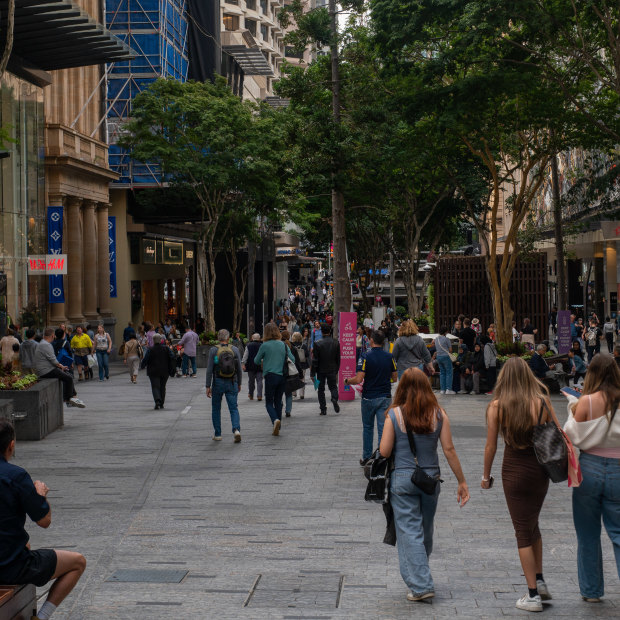
Vacancy rates are high but foot traffic is up in Brisbane’s Queen Street Mall. Credit: Rhett Hamilton
Aquila in Queen Street Mall’s Wintergarden centre is an unlikely story of resilience against the challenges facing retailers in Brisbane’s CBD.
The men’s footwear retailer has had a presence in the mall for nearly 10 years, including a concession store in Myer before the anchor tenant departed its eponymous centre in 2023.
In the Wintergarden, Aquila is one of a dwindling number of retailers, with others clearing out before a redevelopment planned to start next year.
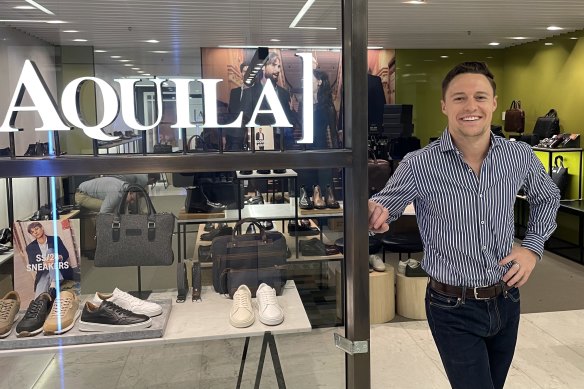
Despite the challenges that have plagued men’s footwear retailer Aquila, Queensland state manager Hayden Smith says they are faring well.Credit: Courtney Kruk
They have lost foot traffic and visibility, but the brand’s Queensland state manager Hayden Smith says the store is doing unusually well despite the circumstances, with sales up from previous years.
Aquila will eventually leave Wintergarden. When they do, Smith says they will look for another central location.
“It’s handy being in the CBD, and we have a lot of networking with suiting brands that bring their customers here,” he says.
But the store would be forgiven for considering suburban options.
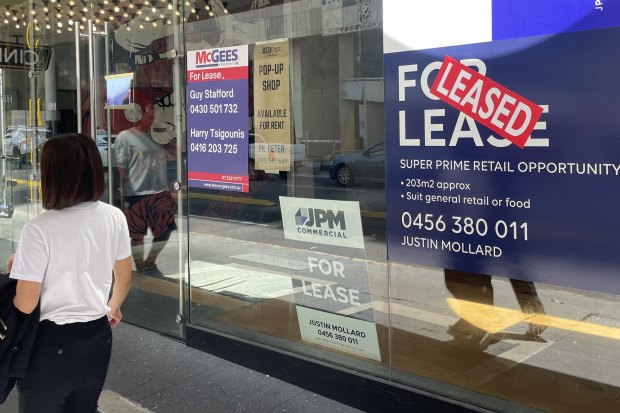
Retail vacancy rates in Brisbane’s CBD have continued to rise in 2024, with uncertainty plaguing shopping precincts.Credit: Courtney Kruk
Retail vacancy rates in Brisbane’s CBD are the second-highest in the country, behind Perth. Commercial real estate agency CBRE says 19.2 per cent of shops in Brisbane’s CBD were empty in June.
Plans to revitalise the CBD’s retail reputation have been teased for years.
But with every promised redevelopment and completion date, there have been a suite of excuses and delays.
Uncertainty has hovered over Uptown (formerly the Myer Centre) at the top end of Queen Street Mall for more than a year.
Speculation that retail might fill the old Treasury Casino building was quashed last month with the news Griffith University would take over the space.
And plans for a luxury retail precinct at the Queen’s Wharf casino development are up in the air, with the former anchor tenant suing Destination Brisbane Consortium.
Data from Square, which provides payment terminals to businesses, shows the CBD accounts for 10.8 per cent of Brisbane’s total retail and food and drink spending volume.
Unlike Melbourne, where 69 per cent of spending occurs in the CBD, spending across Brisbane is far more decentralised.
While Brisbane’s CBD is flush with office workers compared with Sydney and Melbourne, most prefer to save their retail therapy for suburban Westfields.
There was a time when a trip to the CBD was treated as a destination shopping event. People would travel from outer suburbs into the city to shop at bespoke retailers. There was a sense of an exclusive experience.
QUT professor and retail expert Gary Mortimer says while this has been replicated in other precincts such as Fortitude Valley’s James Street, the destination shopping experience has waned in the CBD.
“It’s challenging to draw customers into a shopping centre (like Uptown) if you don’t have a major tenant or enough attractions to draw them in,” he says.
“What we’ve seen post-pandemic and with the rise of working from home is that people aren’t particularly going into the CBD to shop any longer.
“They’re more likely to go to big centres like Chermside, Mount Gravatt and Indooroopilly where they can essentially park for free.”
However, positive signs have emerged. Pedestrian traffic and visitor spending have increased in the CBD.
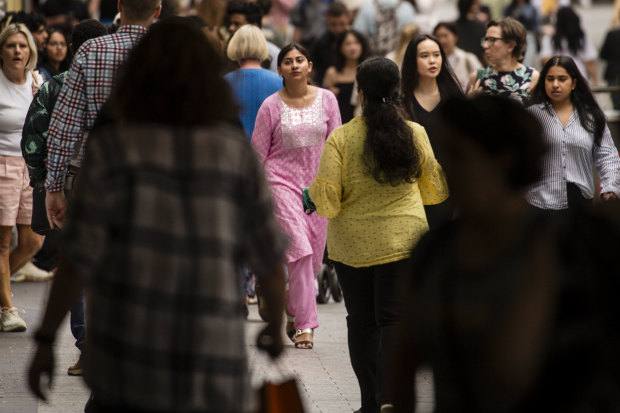
Brisbane City Council data shows about 1 million pedestrian movements through Queen Street Mall each week. Credit: Glenn Campbell
Foot traffic in Queen Street Mall has risen to about 78 per cent of pre-COVID levels, according to Brisbane City Council. That equates to more than 1 million pedestrian movements every week, although the council could not provide the raw data.
Tuesday has become the peak day for the CBD, with office attendance leaping to 87 per cent.
The most number of people flocked to the CBD this year on Saturday, August 31 – the week of Queen’s Wharf’s first staged opening and the day of Riverfire and the Battle of Brisbane match between the Broncos and Dolphins. Foot traffic was at 89 per cent of pre-COVID levels.
“While the global pandemic had a massive impact on the number of people coming into the CBD, it’s positive to see more people returning, not just to work, but also to visit,” Deputy Mayor Krista Adams said.
“It’s an incredibly exciting time for Brisbane and projects like our Kangaroo Point Bridge and Queen’s Wharf and Waterfront Brisbane [also known as the Eagle Street Pier redevelopment] will make our city centre even better.”
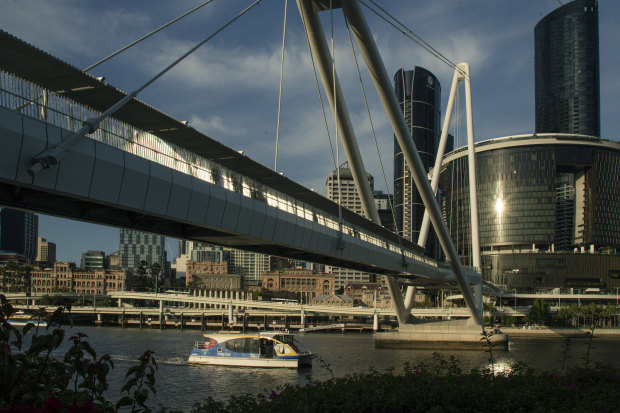
The Star casino and Queen’s Wharf complex at the end of the Neville Bonner Bridge. Credit: Glenn Campbell
Across from Aquila in the Wintergarden, homewares and gift store Pigeonhole has weathered similar challenges in the past year, though there are positive changes ahead for the retailer.
Until recently, the brand had a sister store, Coo Coo, in Uptown.
After failing to reach a lease agreement, they have now negotiated a new storefront next to The Body Shop, across from Jimmy’s on the Mall. Foot traffic will not be an issue here.
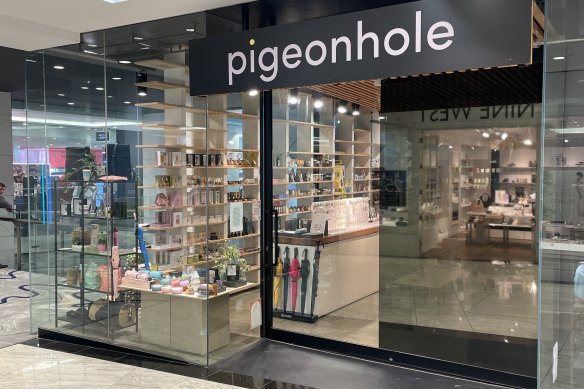
Like Aquila, Pigeonhole has suffered from Wintergarden’s upcoming redevelopment plans and the exit of many retailers, attracting less foot traffic and lunch trade to the centre.Credit: Courtney Kruk
“I’ve worked in the city for a long time and I’ve been through all the changes,” says store manager Emily Haupt.
“I do think the closure of Myer in [Uptown] has impacted trade within the city.
“[But] the city is still a unique environment compared to, say, a Westfield. And from my observations, things have settled down a lot and the city is returning to its old self.”
Start the day with a summary of the day’s most important and interesting stories, analysis and insights. Sign up for our Morning Edition newsletter.